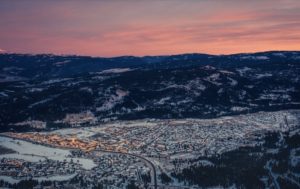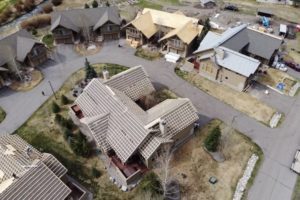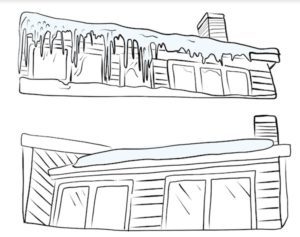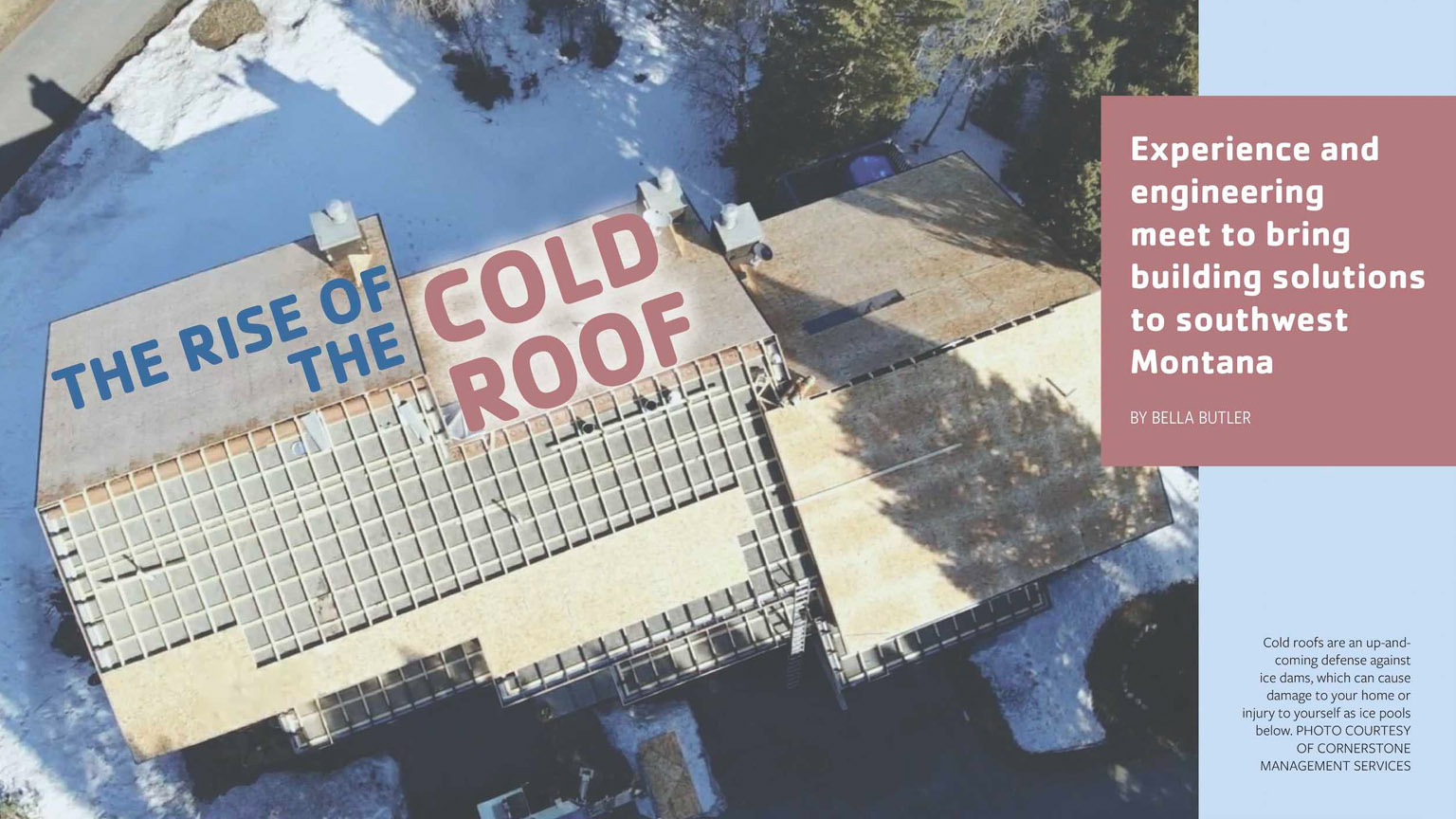By Bella Butler
When you embrace the treasures of living in southwest Montana’s winter wonderland, you also bear its burdens. The freezing night temperatures that make the surface of the snow glitter in the morning also make for an icy commute; the late sunrise that keeps you cozy in bed for a little bit longer also closes you in early at night; and the big powder dumps that make you grin ear-to-ear on the slopes give you a headache when they melt and refreeze on your roof, creating ice dams that are costly and laborsome to remove.


Big Sky is no stranger to long, cold winters, which bring snow and ice. As the primary guard against the elements, your roof should be prepared to weather any storm. PHOTO BY CHRIS KAMMAN
This isn’t to say you ought to shrug and accept these downsides. In the case of your home, the solution can be as simple as making a science-informed adjustment. One such fix that’s gaining traction is the cold roof.
A cold roof is a defense against an ice dam, which forms when rising heat from an indoor space melts rooftop snow. The melting snow drips down the pitch above the soffit, where it freezes, forming a block of ice. The ice dam then backs up additional snowmelt, which can then leak into the interior of the structure and do a lot of damage.
The cold roof is essentially a dual roof that uses a layer of insulation to separate the roof’s external surface from the interior of a home, protecting against the snowmelt and ultimately, the ice dam. According to Andy Dreisbach, Big Sky contractor and owner of Cornerstone Management Services, this technique is at the forefront of modern-day, high-alpine building. Rather than reacting to problems, Dreisbach says, it’s about addressing them at their core.
“I’ve lived in a lot of alpine areas, but I’ve never seen the anomalies of ice damming and things that transpire here (in Big Sky) in other places,” Dreisbach explained one morning over a cup of coffee in his office. Dreisbach brought his business to Big Sky about 20 years ago and started building roofs when he couldn’t find anyone else in the area to do it.
Through decades of observation, and trial and error, Dreisbach started to develop the idea of a cold roof. In the last few years, he sought to refine the concept he knew worked from practice using empirical science and data. Last year, CMS partnered with a team of students from Montana State University’s College of Engineering to test the cold roof theory, produce data to demonstrate its efficacy and polish CMS’ design.


Andy Dreisbach, Big Sky contractor and owner of Cornerstone Management Services, has fine-tuned the concept of the cold roof for residents in Big Sky. PHOTO COURTESY OF CORNERSTONE MANAGEMENT SERVICES
Now, one of those students, Teran Foster, works as a product development engineer for CMS, where he can test cold roof designs using computers and in-house experiments to bring the simplified technology to its full potential—and demonstrate it to clients.
After testing cold roofs in the Big Sky area for private homeowners, the concept really started to garner popularity seven years ago after Dreisbach collaborated with the Yellowstone Club on the added benefits of the cold roof system.
Although CMS has seen the demand for cold roofs grow exponentially each year, Dreisbach says the concept is actually not a very new technology, but rather a revitalized one.
Dreisbach invokes an image from the 1968 movie Heidi about an orphan girl who must go live in the rural Swiss Alps with her grandfather. Against the backdrop of the snow-capped European mountains, not entirely unlike the view from a Big Sky window, Heidi’s grandfather climbs onto the roof of his modest house.
“I’ve lived in a lot of alpine areas, but I’ve never seen the anomalies of ice damming and things that transpire here (in Big Sky) in other places.” – Andy Dreisbach, owner, Cornerstone Managment Services
“When he’s standing in that roof system basically it was a separation of church and state,” Dreisbach said. “It’s a separation of that interior space to the exterior space so they didn’t have that direct contact of interface … We didn’t invent this concept, we’re just trying to fine-tune it.”
Dreisbach observed that as building complexities increase, (building roofs with several pitch lines, for example) there are challenges to those systems.
“Basically we’re just trying to break it back down, back to the simple,” he said.


Traditional roof:
Traditional roofs suffer from the thawing and refreezing of ice causing costly and damaging ice dams and dangerous icicles along your roofline eaves.
Cold roof:
Cold roofs create a layer of insulation that separates its external surface from the interior of a home, protecting against snowmelt. GRAPHIC BY ME BROWN
To date, CMS has had a hand in the completion of more than 400 cold roofs in Big Sky, both retrofitted and new, 74 of which have been completed in 2021. The first of those 400-plus was nearly 15 years ago, when Big Sky resident Todd Meredith trusted Dreisbach with what the contractor couldn’t yet explain with engineering or computer simulations, as Foster does now.
“We’ve had our house for 14 years, and we’ve never had a roof problem,” Meredith said.
After hearing countless roof horror stories from friends over the years, the Beaver Creek homeowner knows his stable roof isn’t just good fortune—it’s because of the cold roof Dreisbach installed nearly a decade and a half ago.
Cold roofs do cost more up front, Dreisbach said, but by protecting against future water damage and replacing heat tape that spikes your energy bill in the winter, cold roofs have the potential to offer payback, similar to the investment of a solar panel system.
And Meredith’s advice to prospective homeowners looking to stake their piece of the winter wonderland: “Don’t save money on things that will end up costing you more later.”
While living in high-alpine paradise doesn’t come without sacrifice, your roof—the single barrier between your home and the harsh Montana elements—doesn’t have to be one of them.








